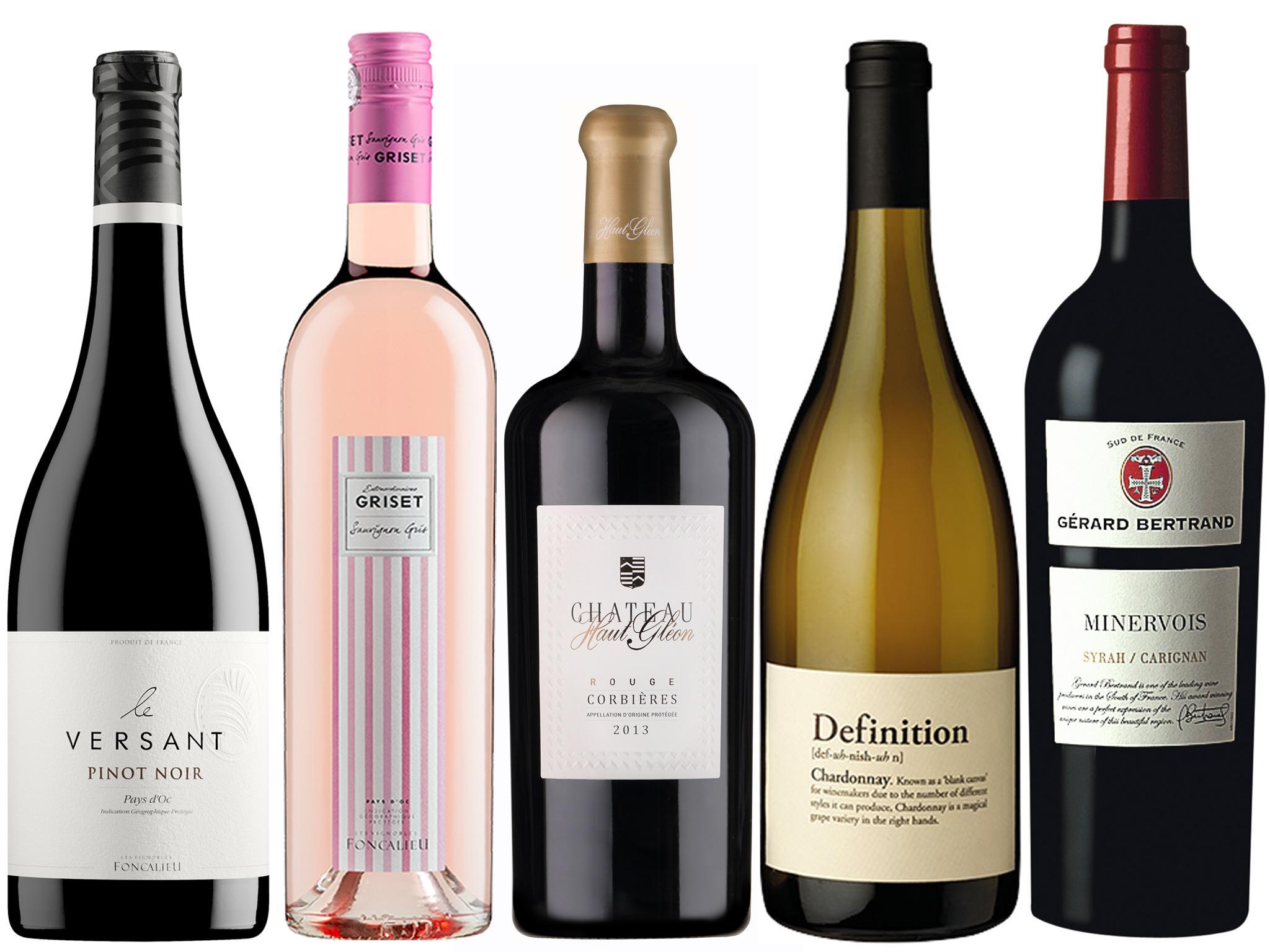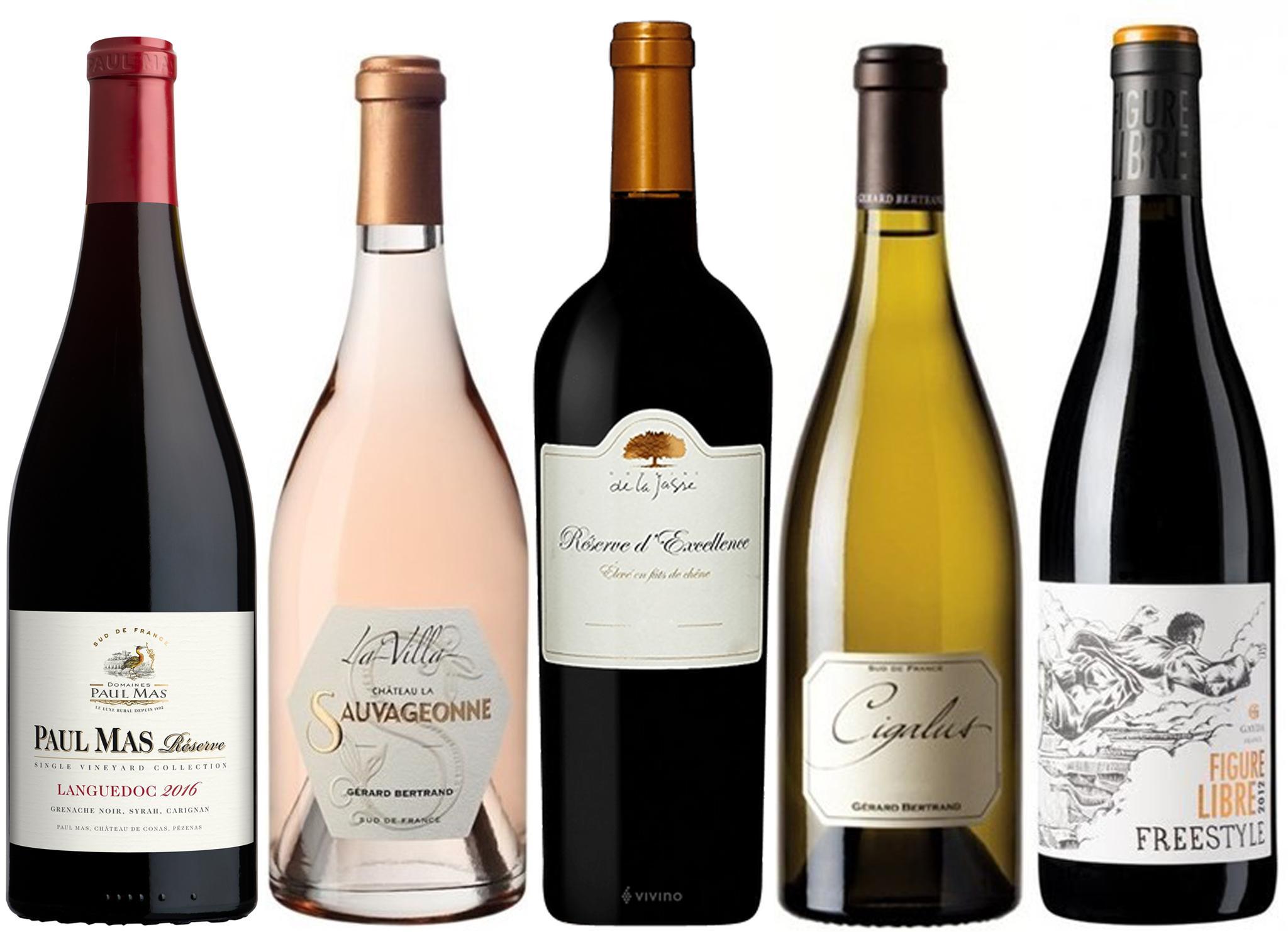The Independent's journalism is supported by our readers. When you purchase through links on our site, we may earn commission.
Wines of the week: 10 bottles from the Languedoc-Roussillon
Unlike other regions in France, it’s not dominated by just a handful of grapes – and now it’s enjoying an explosion in popularity, says Terry Kirby

Your support helps us to tell the story
From reproductive rights to climate change to Big Tech, The Independent is on the ground when the story is developing. Whether it's investigating the financials of Elon Musk's pro-Trump PAC or producing our latest documentary, 'The A Word', which shines a light on the American women fighting for reproductive rights, we know how important it is to parse out the facts from the messaging.
At such a critical moment in US history, we need reporters on the ground. Your donation allows us to keep sending journalists to speak to both sides of the story.
The Independent is trusted by Americans across the entire political spectrum. And unlike many other quality news outlets, we choose not to lock Americans out of our reporting and analysis with paywalls. We believe quality journalism should be available to everyone, paid for by those who can afford it.
Your support makes all the difference.The Languedoc-Roussillon region in southern France is where, several decades ago, I first learned to love French wine and food. The vineyards around the small village near Montpellier where I stayed with friends seemed never-ending and we drank gallons of the vibrant red from the local cooperative of vine growers; pumped, petrol station-style, into large plastic containers.
Then, the vast region, which stretches westwards along the Mediterranean from the Rhone Valley to the Spanish border, and where wine has been made since ancient times, produced three times more wine than Bordeaux, but had a fraction of the recognition, lacking many appellation d’origine controlee (AOC) designations. It was generally seen as the home of vin ordinaire, cheap table wine, made by these kind of local cooperatives and small growers, unworthy of serious consideration.
Today, much of that has changed. Although it is no longer an administrative region of France – being subsumed into the bigger Occitanie – the name as a wine area is stronger than ever, producers have upped their game and there are an increasing number of AOC’s – including the wines from the village where I used to stay.
And there is a much broader recognition among UK consumers for the region’s value for money and the astonishing variety of their true-to-terroir wines: robust reds from Corbieres and Minervois, vibrant sparklers and chardonnays from Limoux and the currently fashionable whites of picpoul de pinet, as well as a host of other approachable, food friendly wines, made from various combinations of the many grapes that thrive on the sun-baked, sea-facing slopes or amid the Mediterranean scrub. This is not a region, like many others in France, dominated by just a handful of grapes.
One of the reasons for the explosion of the region has been the growth of larger combines and producers which have taken over or combined with smaller estates and village cooperatives, improved standards and, crucially, marketing and brand recognition – many of these wines now have the “Sud de France” logo. And while there will be some sacrifices to individuality, these companies can at least say they guarantee the quality control and quantities of production that smaller concerns struggle to meet – and are also producing some serious and more upmarket wines.
So, amid the clatter and confusion of the marketplace and with a multitude of areas and grapes, blends and brands, what do wine drinkers need to look for to be sure of quality for their cash? One of the biggest names in the region is Domaines Paul Mas, which began life as a small family estate and now, under different labels and brands, supplies almost all the main UK supermarkets as well as Majestic and online retailers with mostly reliable quality, value for money wines, generally at the more affordable end. Sometimes you will find the name on the label, such as the smooth, gently spicy grenache/syrah/carignan blend Paul Mas Reserve Languedoc Rouge 2018 (£9.39 waitrose.com), a perfect everyday wine for midweek meals – and there is also a companion sauvignon/viognier blend and a grenache blanc blend in the same Waitrose line.
But other times you have to look a bit harder to find the name, such as the full-bodied, brioche and citrus inflected and gently oaked, fish-pie friendly Definition Chardonnay 2018, Limoux (£11.99 or £9.99 if bought as part of six-bottle purchase; majestic.co.uk), made for Majestic’s own-label Definition range – which I mentioned in my column last week – but attributed on the back label just to Vignoble Astruc, one of its 15 estates across the Languedoc. A really good white at a fraction of the price you would pay for white Burgundy of equal quality. You will also find Paul Mas wines in the Sainsbury’s Taste the Difference and Co-op Irresistible ranges, among others.

Another big player is Vignobles Foncalieu, a union of more than 600 cooperatives based near the ancient city of Carcassonne that’s been going since 1967. Its roots are in the same kind of budget wines as Paul Mas, with sparky everyday crowd-pleasing wines such as the refreshing tangerine and passion-fruit flavoured Griset Rose, Sauvignon Gris (£8.95 albionwineshippers.co.uk; £8.99 www.affordablewine.co.uk), made from the slightly obscure sauvignon gris grape, and the Le Versant Pinot Noir (£9.45 henningswine.co.uk, allaboutwine.co.uk; £9.95 talkingwines.co.uk), a much richer, darker version of pinot noir than its more ethereal Burgundian cousin further north, and perhaps better value.
But in recent years it has expanded to produce more upmarket, Provencal-style roses and a range from the prestigious Chateau Haut Gleon including the exceptional Chateau Haut Gleon Rouge 2016 (£23.99 finewinesdirectuk.com), an intense, spicy, full-flavoured grenache, ideal for this time of year for cassoulet – one of the signature dishes of the region – and any roasted meats or big vegetable dishes.
Then there is Gerard Bertrand; the former French rugby player took over the family wine business in 1987 and has expanded it into a major empire, with its own estates and brands. Like Mas and Foncalieu, it produces good everyday wines for high-street outlets, like the Gerard Bertrand Syrah/Carignan, Minervois French Red Wine (£9.99 waitrose.com), another big, robust, spicy red blend that is so characteristic of the region and ideal for pasta or any tomato-based Mediterranean cuisine, as well as much more dinner-table wines such as the Cigalus Blanc IGP Aude Hauterive 2017 (£28.16 corkingwines.co.uk) a bold, mouth-filling and complex blend of mostly chardonnay, with some viognier and sauvignon blanc: lightly oaked, buttery, tropical fruits and a long finish. For those big fish dishes.
And there is also the extraordinary Gerard Bertrand Chateau La Sauvageonne Rose La Villa 2018 (£43.26 www.corkingwines.co.uk), a grenache and mourvedre-dominated blend of palest pink and a clear attempt to outdo Provence in the “big sophisticated complex roses in elegant bottles” game. And worth it, just about, for special occasions.
But it isn’t all about the big players; there smaller concerns such as Calmel & Joseph and Abbotts et Delaunay that produce consistently high quality, smartly packaged wines from single varietals and blends from their own estates, which I’ve recommended before and will doubtless recommend again.
But to end on a couple of bottles that demonstrate that the individuality of the region is thriving: Domaine Gayda, part-owned by a Brit and based at Brugairolles near Carcassonne, produces a range of organic and idiosyncratically named wines sourced from the estate and nearby growers, putting together a variety of different blends, such as the velvety, full-bodied, rather brilliant Domaine Gayda Freestyle Rouge 2016 (£16.26 haywines.co.uk), made from a blend of syrah, mouvedre, carignan and others. Look out for its wines in independent wine shops.
From the other side of Languedoc-Roussillon comes the Domaine De La Jasse Reserve d’Excellence 2016 (£14.95 jnwine.com), a rich and full-bodied cabernet sauvignon from a small estate close to my old haunts near Montpellier, which produces just a small number of carefully crafted wines, that also embody the terroir of those endless vineyards. And both these latter two, along with all these other producers, illustrate the astonishing diversity of this most wonderful winemaking region.
Join our commenting forum
Join thought-provoking conversations, follow other Independent readers and see their replies
Comments